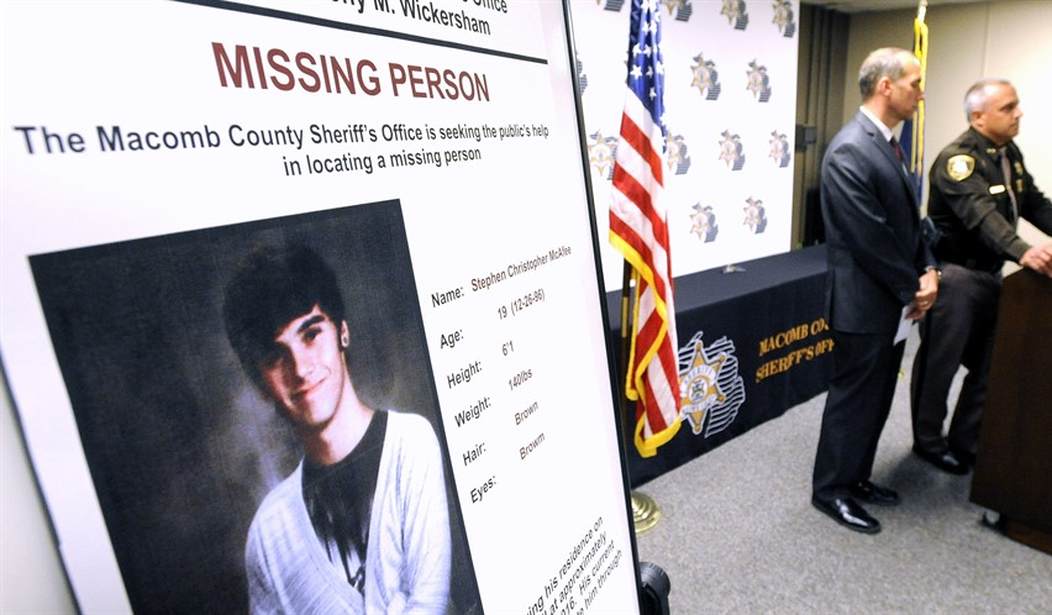The Boston Globe ran a very good deep-dive yesterday into one aspect of American law enforcement that tragically impacts far too many families and for which there don’t seem to be any obvious solutions. Hanna Krueger examined the phenomenon of missing persons and the scattershot way that police departments across the country investigate and very often fail to solve such cases. She highlights the story of Reina Morales-Rojas, a 41-year-old mother of two who took a short trip to visit friends last Thanksgiving. She has not been seen since. But her friends and family have been critical of the Boston Police Department, who they say have never shown any urgency in trying to find her. (The Boston PD disagrees and claims they have fully investigated every lead and tip they have received.)
Meanwhile, other missing person cases generate many headlines and ongoing updates. It seems to depend on the police department in question and how the missing person is perceived. And these disparities raise questions about the type of training that police officers receive as well as how the media prioritizes its coverage of such disappearances. (Emphasis added)
This is the way it often goes for people reported missing in Massachusetts. It isn’t that cases fall through cracks in the system; it’s that there’s no system at all. The pursuit of these cases hinges almost entirely on the discretion — and commitment level — of local police departments. Such efforts vary wildly.
The only federal database accessible to the public, NamUs, is completely unreliable and includes fewer than 10 percent of the state’s missing persons at any given time, a Globe investigation found. There is no standard protocol for handling these reports and coordination across state lines is spotty at best. Getting someone’s name on the list, much less provoking law enforcement action, often boils down to a few simple things: the police department on the case, the aggressiveness of advocates, and the social standing of the missing person.
The author contrasts the handling of the disappearance of Morales-Rojas with two other recent cases. Ana Walshe and Brittany Tee both went missing from the Boston area. But the response to those mysteries was quite different. The State Police joined in with the Boston PD almost immediately and their pictures flashed across the evening news on a daily basis. Meanwhile, most residents in the Boston area don’t even recognize Reina Morales-Rojas’ name. You won’t be surprised to learn that both Walshe and Tee are younger white women from wealthier families in the suburbs, while Morales-Rojas is an immigrant from South America.
What Krueger is referring to here has long been known as the “Missing White Woman Syndrome.” I find it impossible to dispute that this is a reality. Young, attractive white women attract far more attention from both the press and law enforcement than minority women or men (of any color). They also tend to show up more quickly in the NamUs database, the only national database tracking missing person cases. Conversely, the Globe found that 90% of such cases in Massachusetts are never entered into the database at all.
There’s more to the subject of missing person cases than just the bias in the system, however. I’ve been following this subject for quite a few years and some of the numbers I’ve come across were quite startling. Every year in the United States, we have a lot of people that wind up going missing. The Department of Justice reports that more than 660,000 people are reported missing each year. A very large majority of those cases are canceled, meaning that the person was either located safely or identified as being deceased. But tens of thousands of these cases are never resolved.
I’ve interviewed a few law enforcement officials on this subject. It’s true that some people simply move away and don’t tell anyone they are leaving. There are various reasons for that to happen and nobody is required by law to tell their friends and family when they move. Others no doubt succumb to accidents, perhaps when hiking in the forest or while swimming alone. But speaking on background, plenty of cops will tell you that it’s pretty much a certainty that a significant number of those people were killed, but their bodies were never recovered and their killers were never identified.
The murderers that we manage to catch tend to fall into two classes. There are some who act out in a sudden moment of rage when there may be witnesses or security cameras in the area. Others are simply stupid and leave a trail of breadcrumbs for detectives to follow. But these same police officers will privately admit that there are some very smart murderers out there who plan their crimes carefully, selecting subjects that they have no identifiable ties to and are very hard to solve. The reality is that we could have a shocking number of serial killers out there on the loose that we have no idea about. But we almost certainly could use some sort of standardized training in how to handle missing person cases and ensure that it’s made available to law enforcement agencies around the country. We really need to do better.







Join the conversation as a VIP Member